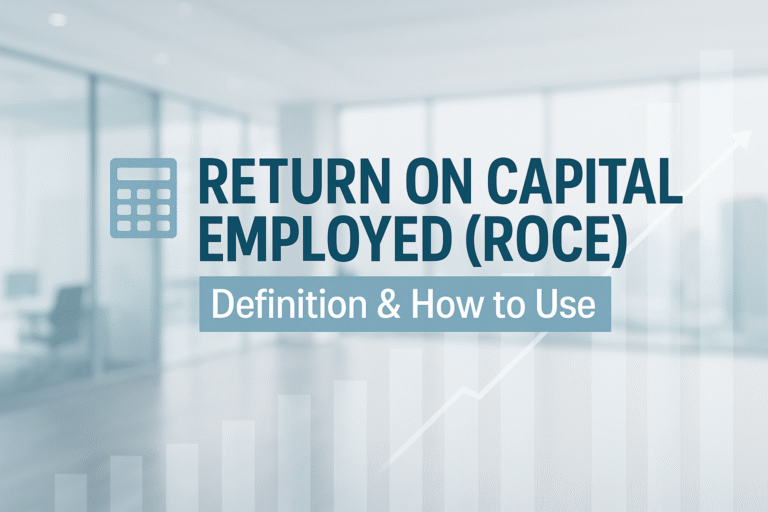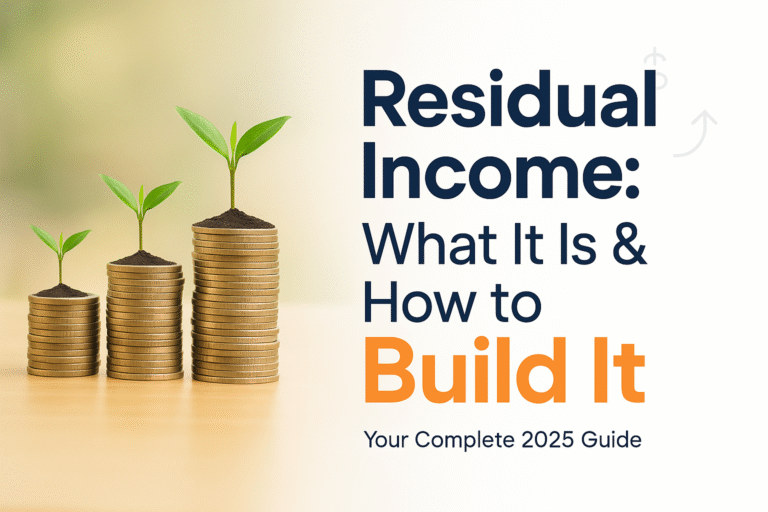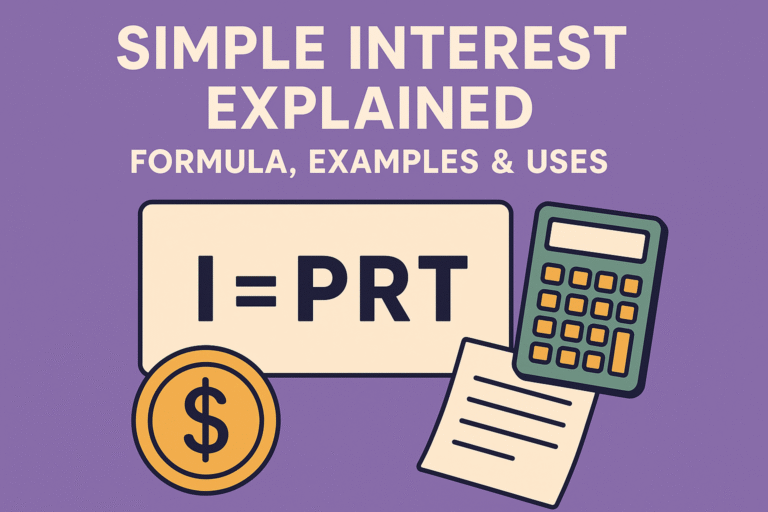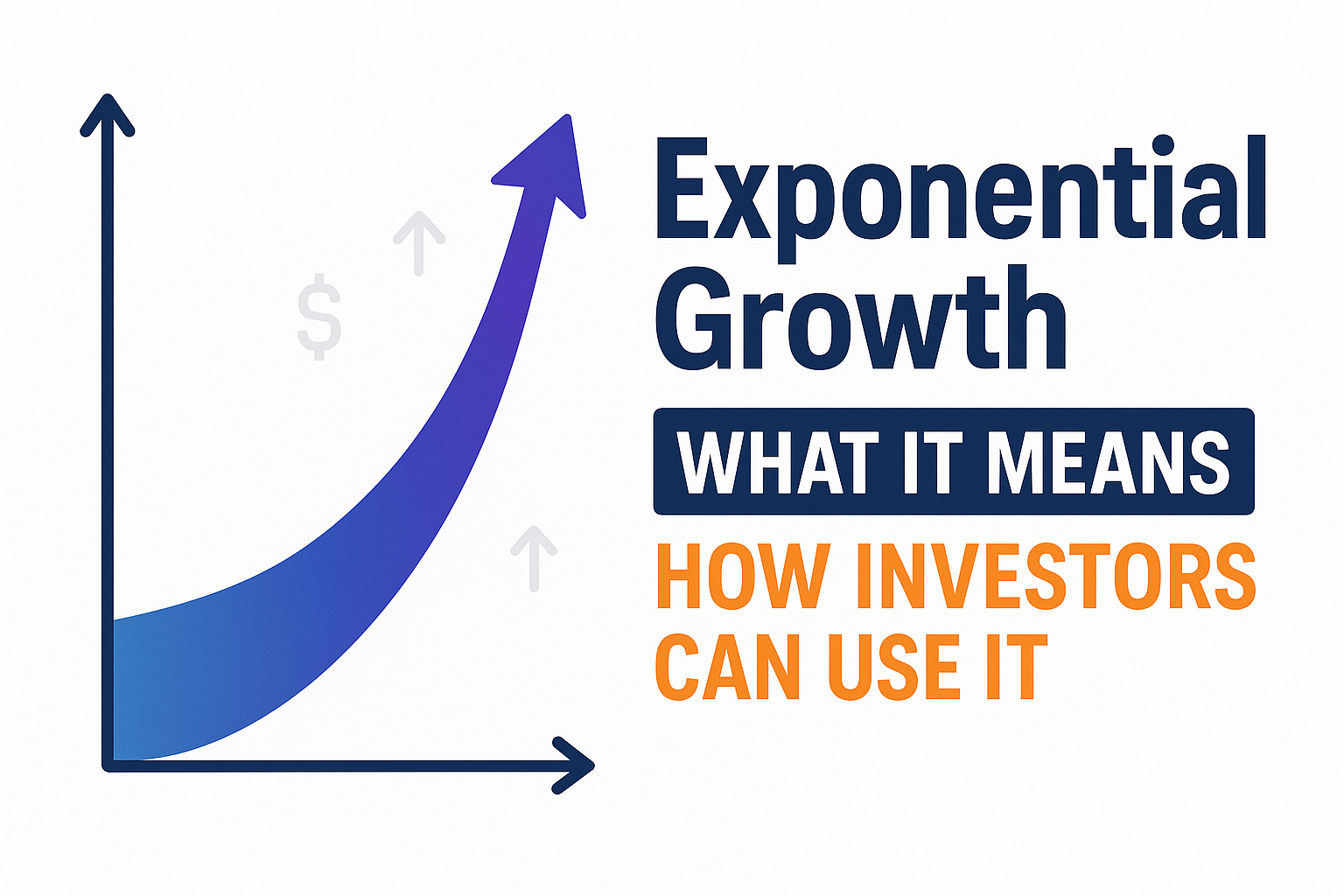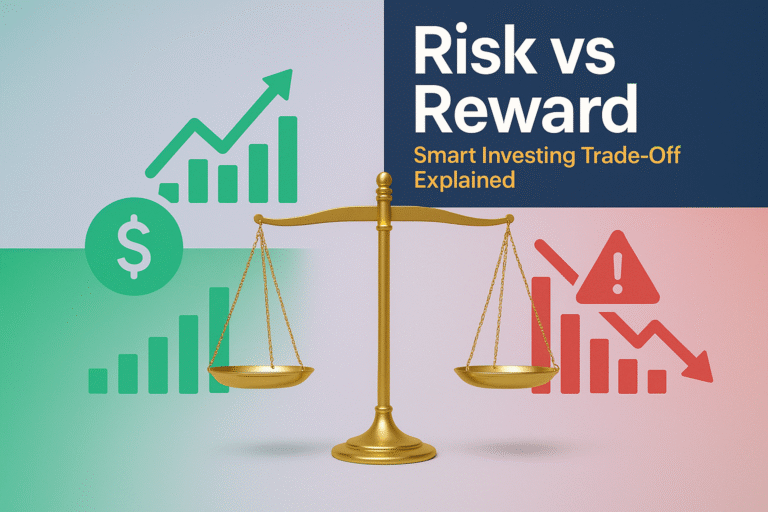Picture this: Sarah works as a marketing manager, pulling in $75,000 a year, while her friend Mike earns $50,000 from rental properties. When tax season rolls around, Sarah is shocked to discover she pays significantly more in Social Security and Medicare taxes than Mike, despite earning less overall. Why? Because Sarah has earned income, while Mike’s rental income is considered passive. Understanding this distinction could save you thousands of dollars and fundamentally change how you approach building wealth.
The world of income classification might seem like accounting jargon, but it’s actually one of the most powerful concepts in personal finance. Whether you’re starting your first job, planning for retirement, or building smart passive income streams, knowing exactly what earned income is and how it’s taxed can transform your financial strategy.
TL;DR
Earned income is money you receive in exchange for work or services performed, including wages, salaries, tips, bonuses, and self-employment income.
Earned income is subject to both income tax AND payroll taxes (Social Security and Medicare), making it one of the most heavily taxed income types in the U.S. tax system.
The Earned Income Tax Credit (EITC) can provide substantial refunds to low-to-moderate income workers, potentially worth up to $7,830 for families in 2025.
Understanding the difference between earned, passive, and portfolio income is essential for tax planning and wealth-building strategies.
Strategic planning around earned income—including retirement contributions, health savings accounts, and business structures—can significantly reduce your tax burden.
What Is Earned Income? The Complete Definition
In simple terms, earned income is money you receive in exchange for active work or services you provide. The IRS defines it as compensation received from employment or self-employment activities where you materially participate.
Unlike passive income (rental properties, dividends) or portfolio income (capital gains, interest), earned income requires your active involvement. You’re trading your time, skills, and effort for compensation.
Types of Earned Income Include:
Wages and salaries – Regular paychecks from an employer
Hourly pay – Compensation based on hours worked
Bonuses and commissions – Performance-based compensation
Tips and gratuities – Common in service industries
Self-employment income – Profits from your own business
Professional fees – Income from consulting or freelancing
Union strike benefits – Certain labor-related payments
Long-term disability benefits – If received before the minimum retirement age
Military pay – Active duty compensation
What Does NOT Count as Earned Income?
It’s equally important to understand what the IRS excludes from earned income:
Investment dividends and interest
Rental property income
Pension and annuity payments
Social Security benefits
Unemployment compensation
Alimony (for divorces finalized after 2018)
Child support
Capital gains from selling assets
A simple rule of thumb: If you could make the money while sleeping on a beach in Hawaii, it’s probably not earned income.
How Earned Income Is Taxed: The Double Tax Hit
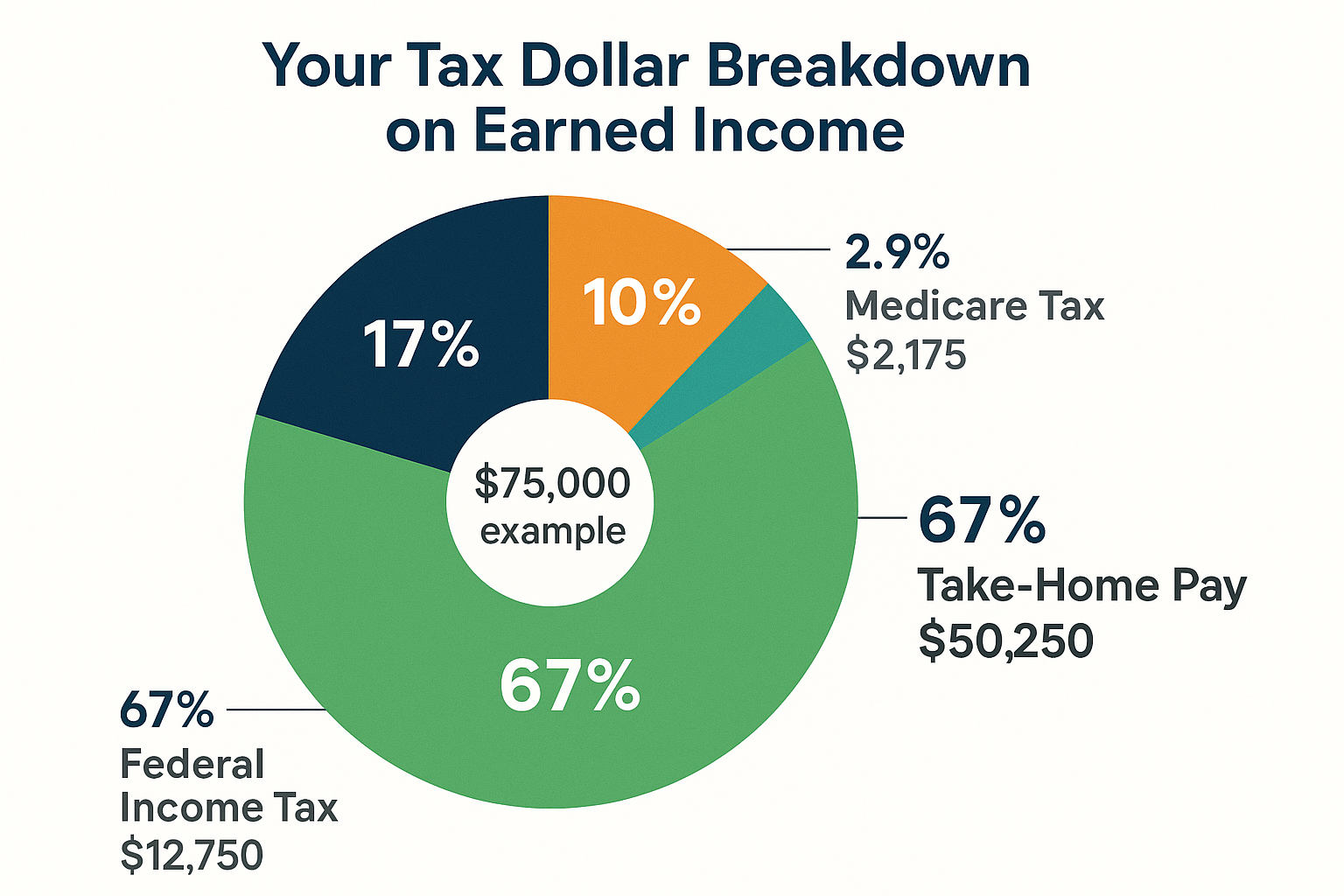
Here’s where earned income gets expensive. Unlike other income types, earned income faces a double taxation burden:
1. Federal Income Tax (Progressive Rates)
For 2025, federal income tax rates range from 10% to 37% depending on your income level and filing status:
| Tax Rate | Single Filers | Married Filing Jointly |
|---|---|---|
| 10% | Up to $11,600 | Up to $23,200 |
| 12% | $11,601 – $47,150 | $23,201 – $94,300 |
| 22% | $47,151 – $100,525 | $94,301 – $201,050 |
| 24% | $100,526 – $191,950 | $201,051 – $383,900 |
| 32% | $191,951 – $243,725 | $383,901 – $487,450 |
| 35% | $243,726 – $609,350 | $487,451 – $731,200 |
| 37% | Over $609,350 | Over $731,200 |
2. Payroll Taxes (FICA)
This is the kicker. Earned income is also subject to:
- Social Security tax: 6.2% on earnings up to $168,600 (2025 limit)
- Medicare tax: 1.45% on all earnings (no cap)
- Additional Medicare tax: 0.9% on earnings over $200,000 (single) or $250,000 (married)
If you’re self-employed, you pay both the employee AND employer portions—a total of 15.3% on the first $168,600, plus 2.9% Medicare tax on everything above that.
Let’s look at a real example:
Case Study: Jennifer, a software engineer earning $120,000 in 2025
- Federal income tax (estimated effective rate): ~$18,500
- Social Security tax (6.2%): $7,440
- Medicare tax (1.45%): $1,740
- Total tax burden: $27,680 (23% of gross income)
If Jennifer had instead earned $120,000 from qualified dividends, she’d pay only 15% federal tax with no payroll taxes—saving over $10,000 annually. This is why wealthy individuals often structure their compensation to minimize earned income.
The Earned Income Tax Credit (EITC): A Powerful Benefit
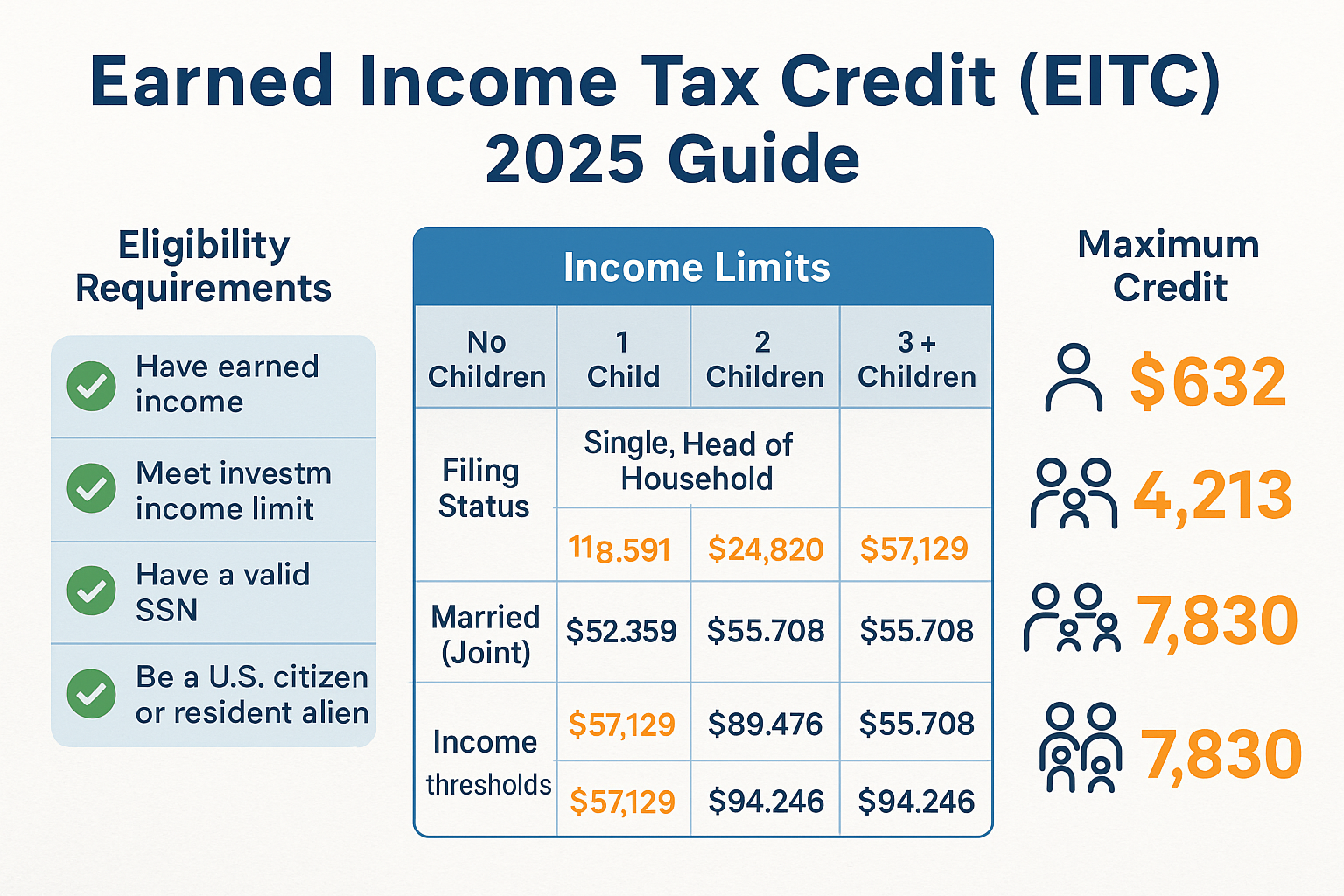
While earned income faces higher taxes, it also unlocks one of the most valuable tax credits available: the Earned Income Tax Credit.
The EITC is a refundable tax credit designed to help low-to-moderate-income workers. “Refundable” means you can receive money back even if you owe no taxes—essentially a government payment to working families.
2025 EITC Maximum Credits:
- No qualifying children: Up to $632
- One qualifying child: Up to $4,213
- Two qualifying children: Up to $6,960
- Three or more qualifying children: Up to $7,830
Eligibility Requirements:
Must have earned income from employment or self-employment
Must meet income limits (varies by filing status and children)
Must have a valid Social Security number
Must be a U.S. citizen or resident alien
Cannot file as “Married Filing Separately”
Investment income must be $11,600 or less
Real-world impact: Maria, a single mother of two earning $35,000 as a retail manager, could receive approximately $6,500 through the EITC—nearly a 19% boost to her take-home pay. This credit has lifted millions of families out of poverty and represents one of the most effective anti-poverty programs in the U.S.
According to the IRS, approximately 25 million eligible workers claim the EITC annually, but millions more miss out because they don’t realize they qualify.
Earned Income vs Passive Income vs. Portfolio Income
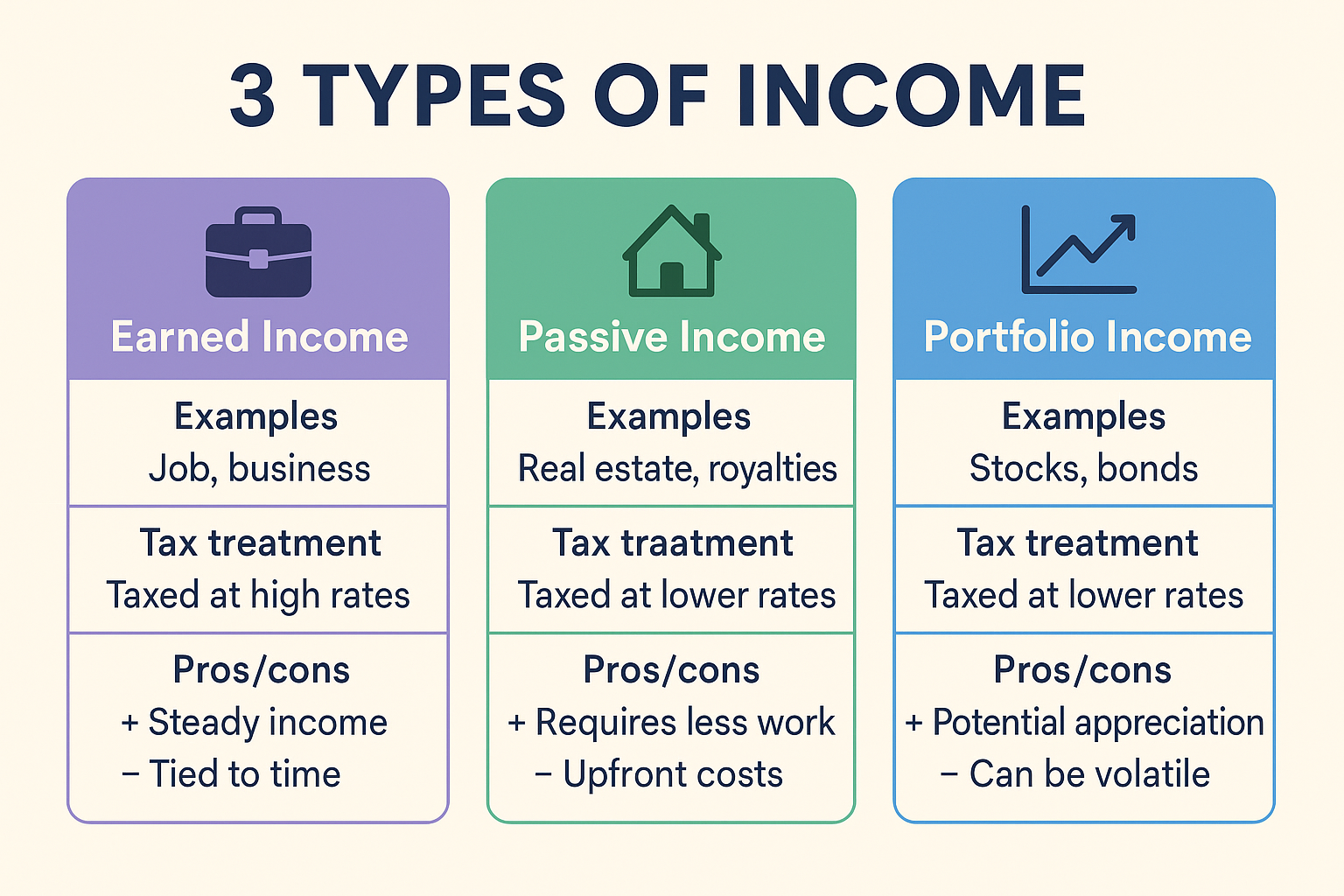
Understanding income classification is crucial for smart financial moves and tax optimization. Let’s break down the three main categories:
Earned Income
Definition: Compensation for active work
Tax treatment: Income tax + payroll taxes
Examples: Salary, wages, self-employment income
Pros: Qualifies for retirement contributions, EITC, and certain deductions
Cons: Highest tax burden, requires active time investment
Passive Income
Definition: Income from activities where you don’t materially participate
Tax treatment: Income tax only (no payroll taxes)
Examples: Rental properties, limited partnerships, businesses where you’re not active
Pros: Lower tax burden, potential for passive income streams
Cons: Passive loss limitations, complex tax rules
Portfolio Income
Definition: Income from investments
Tax treatment: Capital gains rates (often lower) or ordinary income rates
Examples: Stock dividends, interest, capital gains
Pros: Preferential tax rates on qualified dividends and long-term gains
Cons: Doesn’t qualify for earned income benefits like EITC or retirement contributions
Why this matters: Wealthy individuals often structure their income to minimize earned income and maximize passive and portfolio income. Someone earning $500,000 from dividend stocks pays significantly less in total taxes than someone earning $500,000 in salary, even though their gross income is identical.
Strategic Tax Planning for Earned Income
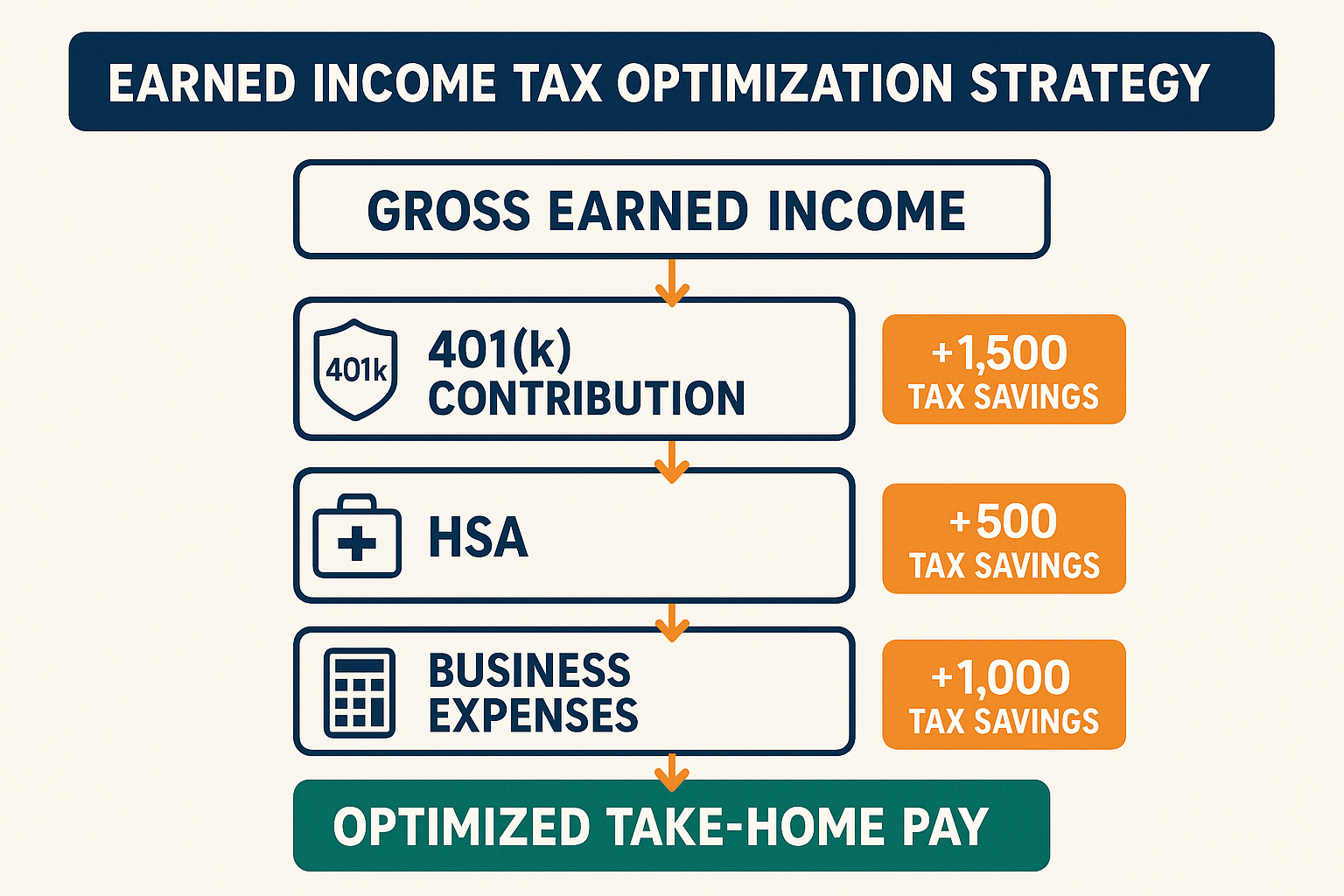
While you can’t escape taxes on earned income entirely, smart strategies can significantly reduce your tax burden:
1. Maximize Retirement Contributions
Traditional 401(k) or 403(b):
- 2025 contribution limit: $23,500 (under 50) or $31,000 (50+)
- Reduces taxable income dollar-for-dollar
- Example: Earning $80,000 and contributing $20,000 means you’re only taxed on $60,000
Traditional IRA:
- 2025 contribution limit: $7,000 (under 50) or $8,000 (50+)
- May be tax-deductible depending on income and workplace plan access
SEP IRA or Solo 401(k) (for self-employed):
- Contribute up to 25% of compensation or $69,000 (2025), whichever is less
- Massive tax savings for high-earning freelancers and business owners
2. Health Savings Accounts (HSAs)
Often called the “triple tax advantage” account:
- Contributions reduce earned income (tax-deductible)
- Growth is tax-free
- Withdrawals for qualified medical expenses are tax-free
- 2025 limits: $4,300 (individual) or $8,550 (family)
Pro tip: Max out your HSA and pay medical expenses out-of-pocket if possible. Let the HSA grow as a stealth retirement account—after age 65, you can withdraw for any purpose and only pay income tax (like a traditional IRA).
3. Flexible Spending Accounts (FSAs)
- Reduce earned income by up to $3,200 (2025) for healthcare FSA
- Dependent care FSA: up to $5,000 for childcare expenses
- Must be used within the plan year (some plans offer small carryovers)
4. Business Structure Optimization (for Self-Employed)
S-Corporation election:
Self-employed individuals can potentially save thousands by electing S-Corp status. You pay yourself a “reasonable salary” (subject to payroll taxes) and take the remaining profits as distributions (no payroll taxes).
Example:
- Total business profit: $150,000
- Reasonable salary: $80,000 (pays full payroll taxes)
- Distribution: $70,000 (no payroll taxes)
- Savings: Approximately $10,700 in self-employment taxes
Note: Consult a tax professional before making this election—it’s not right for everyone and comes with additional compliance requirements.
5. Qualified Business Income Deduction (QBI)
Self-employed individuals and small business owners may deduct up to 20% of qualified business income under Section 199A. This can result in massive tax savings for eligible taxpayers.
Common Earned Income Mistakes to Avoid
1: Not Claiming the EITC
The problem: The IRS estimates that about 20% of eligible taxpayers don’t claim the EITC, leaving billions on the table.
The solution: Use the IRS EITC Assistant tool or work with a tax professional. Even if you don’t typically file taxes, you should file to claim this credit if eligible.
2: Misclassifying Income Types
The problem: Treating hobby income as self-employment income (or vice versa) can lead to incorrect tax treatment.
The solution: Understand the IRS “hobby loss rule.” If you’re not running your activity with a profit motive, it’s a hobby—expenses are not deductible, but income is still taxable.
3: Forgetting About State Taxes
The problem: Focusing only on federal taxes while ignoring state income tax implications.
The solution: Nine states have no income tax (Alaska, Florida, Nevada, New Hampshire, South Dakota, Tennessee, Texas, Washington, Wyoming), which can significantly impact your after-tax income. This is why many high earners relocate to these states.
4: Not Tracking Self-Employment Expenses
The problem: Self-employed individuals failing to deduct legitimate business expenses, unnecessarily inflating their taxable earned income.
The solution: Keep meticulous records. Common deductions include home office expenses, vehicle mileage, supplies, software, professional development, and health insurance premiums.
5: Ignoring Retirement Contribution Opportunities
The problem: Leaving free money on the table by not capturing employer 401(k) matches or maximizing tax-advantaged contributions.
The solution: At minimum, contribute enough to get the full employer match—it’s an immediate 50-100% return on investment. Then work toward maxing out contributions as income allows.
Real-World Example: Optimizing Earned Income Tax Strategy
Let’s follow Marcus, a 35-year-old freelance graphic designer who earned $95,000 in self-employment income in 2025.
Before Optimization:
- Gross earned income: $95,000
- Self-employment tax (15.3% on 92.35%): $13,430
- Federal income tax (estimated): $12,800
- Total tax: $26,230 (27.6% effective rate)
- Take-home: $68,770
After Strategic Planning:
- Gross earned income: $95,000
- Solo 401(k) contribution: -$25,000
- Health insurance deduction: -$8,400
- HSA contribution: -$4,300
- Home office and business expenses: -$12,000
- Adjusted taxable income: $45,300
New tax calculation:
- Self-employment tax (on $57,300): $8,100
- Federal income tax: $4,200
- Total tax: $12,300
- Take-home after contributions: $70,300
Result: Marcus reduced his tax burden by $13,930 while simultaneously building retirement savings and health reserves. His effective tax rate dropped from 27.6% to just 13%, and he’s building long-term wealth.
Earned Income and Retirement Planning
Earned income plays a crucial role in retirement planning for several reasons:
1. Required for Retirement Contributions
You must have earned income to contribute to:
- Traditional and Roth IRAs
- 401(k), 403(b), and 457 plans
- SEP IRAs and SIMPLE IRAs
This is why retirees living solely on Social Security and investment income cannot make new IRA contributions—they lack earned income.
2. Social Security Benefits Calculation
Your Social Security retirement benefits are calculated based on your 35 highest-earning years of earned income. Higher earned income during your working years translates to higher monthly benefits in retirement.
The maximum Social Security benefit in 2025 is $4,873/month—but only if you had maximum taxable earnings for 35 years.
3. Spousal IRA Contributions
If one spouse has earned income and the other doesn’t, the working spouse can contribute to a spousal IRA on behalf of the non-working spouse, effectively doubling the family’s retirement savings potential.
4. Phased Retirement Strategies
Many retirees maintain some earned income through part-time work or consulting. This strategy:
- Delays Social Security (increasing future benefits by 8% per year)
- Allows continued retirement contributions
- Reduces the need to tap retirement accounts early
- Keeps skills sharp and provides social engagement
Earned Income for Kids: Building Wealth Early
One of the most powerful wealth-building strategies involves creating earned income for children. When structured properly, this approach can set kids up for millionaire status by adulthood.
The Strategy:
- Hire your child in your legitimate business
- Pay reasonable wages for actual work performed
- Have the child contribute to a Roth IRA (up to their earned income or $7,000, whichever is less)
The Math:
If a 10-year-old earns $7,000 annually and invests it all in a Roth IRA earning 8% average returns:
- By age 65: $1,037,000 (tax-free!)
- Total contributions: Only $42,000
- Tax-free growth: Nearly $1 million
Important rules:
- Work must be legitimate and age-appropriate
- Wages must be reasonable for the work performed
- Proper documentation is essential
- Children under 18 working for a parent’s sole proprietorship avoid payroll taxes
This strategy combines earned income tax advantages with the power of compound growth and decades, a true wealth-building trifecta.
How Earned Income Affects Government Benefits
Beyond taxes, earned income impacts eligibility for various government programs:
Medicaid and CHIP
Income thresholds (including earned income) determine eligibility for health coverage assistance. Most states use Modified Adjusted Gross Income (MAGI), which includes earned income.
Premium Tax Credits (ACA)
Subsidies for health insurance marketplace plans are based on household income, including earned income. Too much earned income can disqualify you from subsidies.
Student Financial Aid (FAFSA)
Parent and student earned income significantly affects Expected Family Contribution (EFC) calculations, which determine financial aid eligibility.
Social Security Retirement Benefits (Early Claiming)
If you claim Social Security before Full Retirement Age and continue earning income, benefits may be reduced:
- 2025 limit: $22,320
- Benefits are reduced by $1 for every $2 earned above the limit
- In the year you reach FRA: $59,520 limit, reduced $1 for every $3 over
Pro tip: Once you reach Full Retirement Age, you can earn unlimited income without any reduction in Social Security benefits
FAQ: Earned Income
Earned income includes wages, salaries, tips, bonuses, commissions, and self-employment income—essentially any compensation received in exchange for work or services performed. It does not include investment income, rental income, pensions, or Social Security benefits.
Earned income requires active participation and work, while unearned income (like dividends, interest, and capital gains) comes from investments and passive sources. Earned income is subject to both income tax and payroll taxes, whereas unearned income typically faces only income tax and often at preferential rates.
Yes, you must have earned income to contribute to any IRA (traditional or Roth). Your maximum contribution is the lesser of the annual limit ($7,000 in 2025, or $8,000 if 50+) or your total earned income for the year. If you only have investment or rental income, you cannot make IRA contributions.
No, Social Security retirement benefits are not considered earned income. However, Social Security disability benefits received before the minimum retirement age may count as earned income for certain purposes, such as the Earned Income Tax Credit.
For 2025, income limits vary by filing status and number of qualifying children. For example, a married couple filing jointly with two children can earn up to approximately $63,398 and still qualify for the EITC. Use the IRS EITC Assistant tool to determine your specific eligibility.
Generally, no. Rental income is typically classified as passive income unless you’re a real estate professional who materially participates in rental activities for more than 750 hours per year. Most landlords cannot count rental income as earned income for IRA contributions or EITC purposes.
Both types are considered earned income and are combined for tax purposes. However, if you have W-2 wages that already had Social Security tax withheld, that reduces the amount of self-employment income subject to Social Security tax (up to the $168,600 wage base for 2025).
Conclusion: Mastering Earned Income for Financial Success
Understanding earned income isn’t just about tax compliance—it’s about strategic wealth building. While earned income faces the highest tax burden in our system, it also provides the foundation for retirement savings, Social Security benefits, and valuable tax credits like the EITC.
The key to financial success isn’t avoiding earned income (we all need to start somewhere), but rather strategically managing it while building additional income streams. As you progress in your financial journey, consider:
Your Next Steps:
- Calculate your current tax burden using the calculator above to understand exactly where your money goes
- Maximize tax-advantaged accounts – Contribute to 401(k)s, IRAs, and HSAs to reduce taxable earned income while building wealth
- Explore business structures – If self-employed, consult a tax professional about S-Corp election or other optimization strategies
- Build complementary income streams – While maintaining earned income, develop passive income sources and dividend investments that face lower tax burdens
- Claim all eligible credits – Don’t leave money on the table; ensure you’re claiming the EITC and other credits if eligible
- Plan for the long term – Use earned income strategically during your working years to build a diversified income portfolio for retirement
- Educate your children – Teach kids about building wealth early through legitimate earned income and Roth IRA contributions
Remember, wealthy individuals don’t avoid earned income entirely—they just don’t rely on it exclusively. They understand the tax code, leverage every available deduction and credit, and systematically build assets that generate passive and portfolio income over time.
The journey from earned income dependency to financial independence is a marathon, not a sprint. But with the knowledge you’ve gained here, you’re now equipped to make smarter decisions, pay less in taxes, and build lasting wealth—one strategic move at a time.
Want to dive deeper into building wealth? Explore our comprehensive guides on understanding the stock market, why the market trends upward over time, and avoiding common investing mistakes.
References and Sources
This article incorporates information from authoritative sources including:
- Internal Revenue Service (IRS) – IRS.gov – Official tax code, regulations, and guidance on earned income, EITC, and tax brackets
- Social Security Administration – SSA.gov – Wage base limits, benefit calculations, and earnings test information
- U.S. Securities and Exchange Commission – SEC.gov – Investment and financial planning guidance
- Investopedia – Investopedia.com – Financial education and tax strategy resources
- Tax Policy Center – Independent analysis of tax policy and effective tax rates
- Congressional Budget Office – Federal budget and tax revenue analysis
Always consult current IRS publications and a qualified tax professional for your specific situation, as tax laws change frequently and individual circumstances vary.
Disclaimer
This article is for educational purposes only and does not constitute financial, tax, legal, or investment advice. Tax laws are complex and change frequently. Individual circumstances vary significantly, and what works for one person may not be appropriate for another.
Always consult with a qualified tax professional, certified financial planner, or licensed attorney before making significant financial decisions. The calculations and examples provided are simplified illustrations and may not reflect your actual tax situation.
The Earned Income Tax Credit eligibility, tax brackets, deduction limits, and other figures cited are based on 2025 tax year information and are subject to change. Verify all information with official IRS sources or your tax advisor.
About the Author
Written by Max Fonji – With over a decade of experience in financial education and investment strategy, Max is your go-to source for clear, data-backed investing education. Through TheRichGuyMath.com, Max has helped thousands of readers understand complex financial concepts and make smarter money decisions. When not writing about personal finance, Max enjoys analyzing market trends, optimizing tax strategies, and teaching the next generation about building wealth.
Connect with Max and discover more wealth-building strategies at TheRichGuyMath.com.


